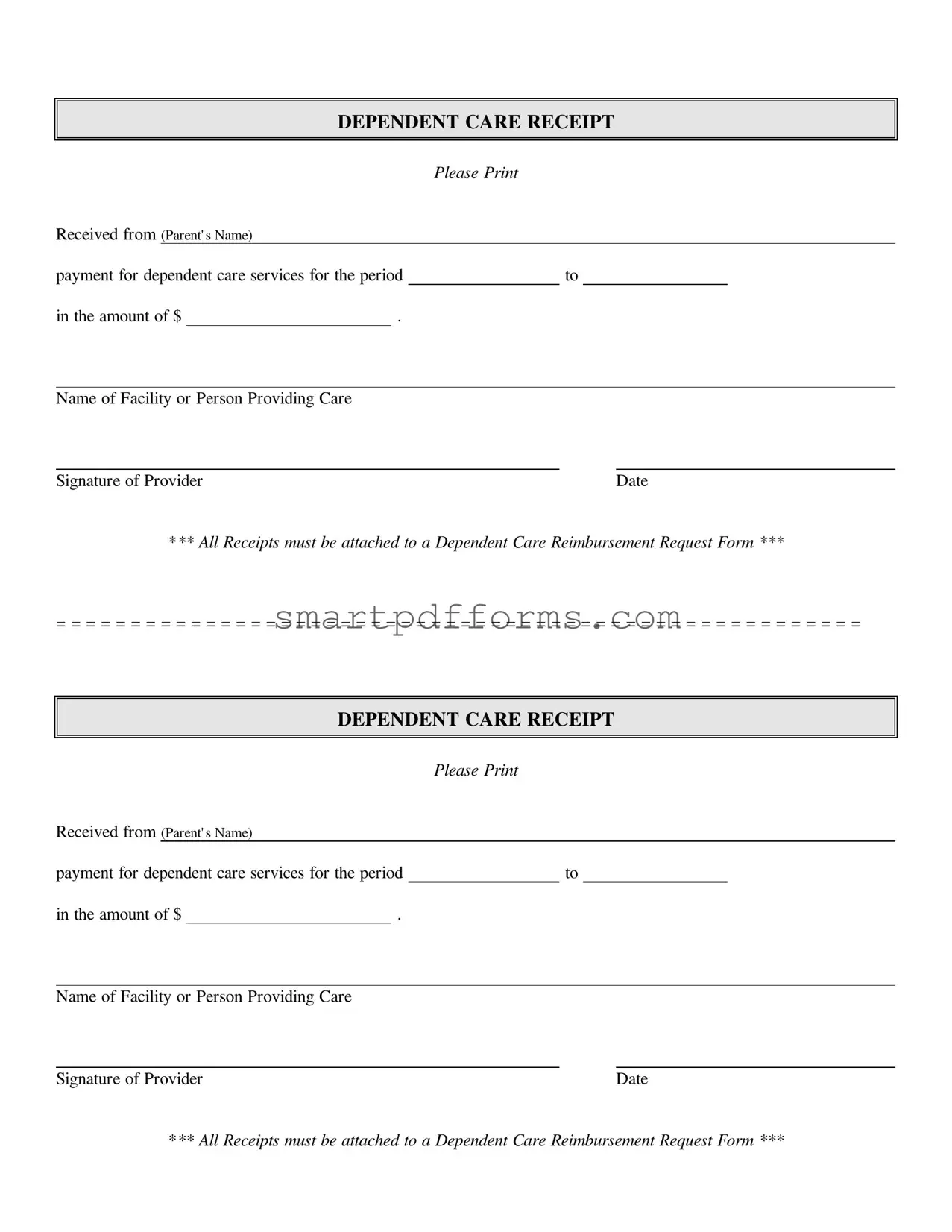Managing the expenses associated with dependent care requires careful attention to detail and adherence to certain procedures, especially when aiming to avail of dependent care benefits through one's employment. A pivotal component of this process is the Dependent Care Receipt form, a document that plays a crucial role in ensuring transparency and accountability in the financial interactions between parents and caregivers. This form serves as a formal acknowledgment of the payment made by parents for services rendered over a specified period. It requires basic information such as the names of the parent and the service provider, the amount paid, and the service period, culminating with the provider's signature. It's essential to note that this form, by itself, is not sufficient for reimbursement purposes. Rather, it must be submitted alongside a Dependent Care Reimbursement Request Form, highlighting the interconnected nature of paperwork required to facilitate the reimbursement process. Such meticulous documentation is not only beneficial for record-keeping but also necessary for verifying the legitimacy of the expenses claimed, ultimately aiding parents in managing the financial aspects of dependent care.

